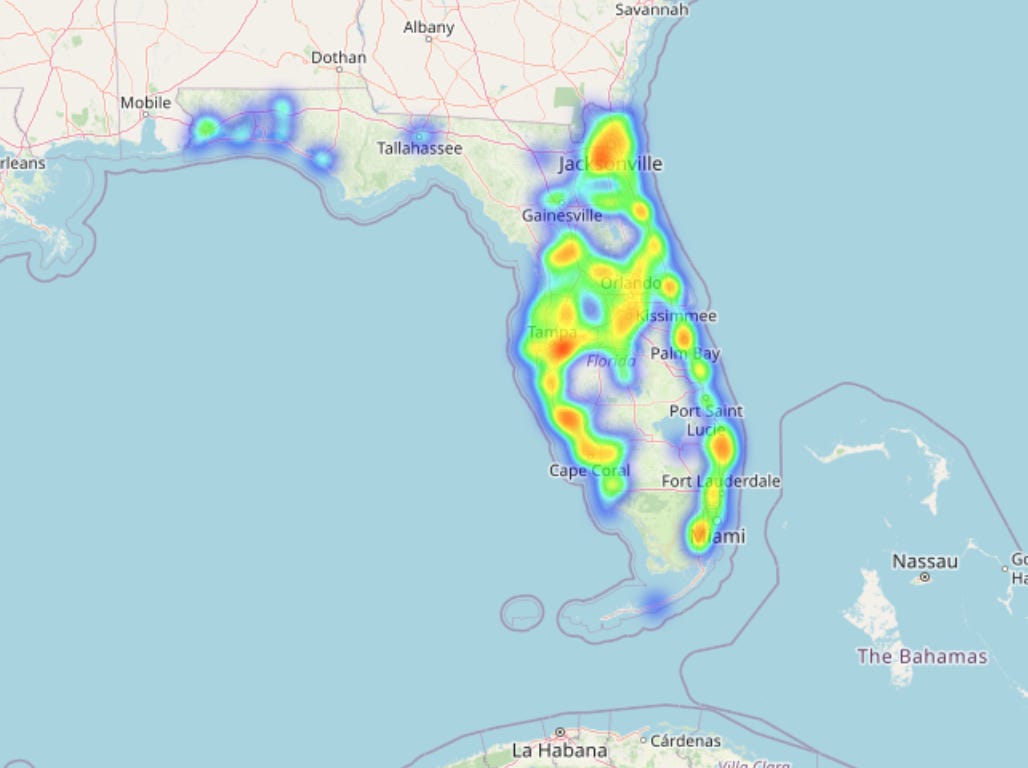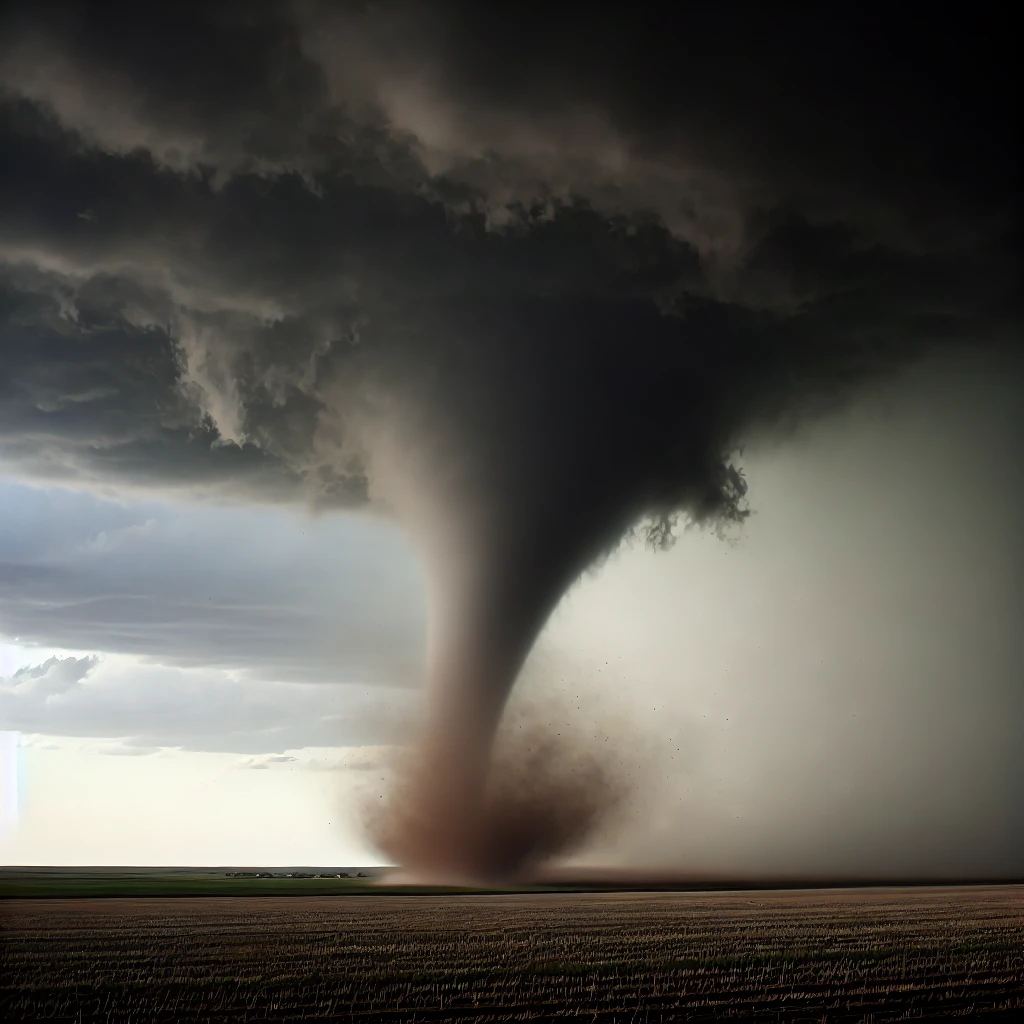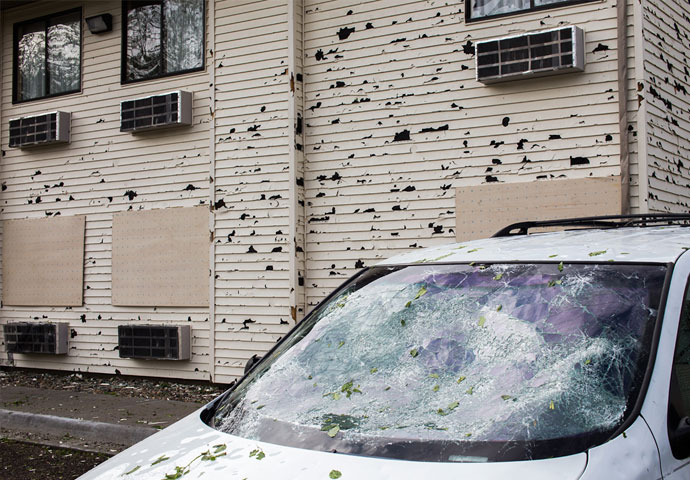
Does Florida Really Get Tornadoes?
Yes, Florida gets tornadoes—and more than most people realize. In fact, Florida ranks third in the country for the highest number of tornadoes per year, following Texas and Kansas. However, many of the tornadoes that occur in Florida are smaller and less intense compared to the supercell tornadoes that frequently hit states in Tornado Alley, such as Oklahoma or Nebraska.
On average, Florida experiences around 66 tornadoes per year, though this number can fluctuate based on weather patterns, tropical storms, and hurricanes. Most of these tornadoes are short-lived and relatively weak, but they can still cause significant damage, particularly to mobile homes and other structures not built to withstand high winds.
Why Does Florida Get Tornadoes?
Florida’s unique geography and climate make it susceptible to tornadoes. The state’s flat terrain and warm, humid weather create the perfect conditions for severe thunderstorms, which are the primary source of tornadoes in Florida. Florida’s tornadoes typically fall into two main categories:
1. Tornadoes From Severe Thunderstorms
Like many other parts of the U.S., Florida experiences tornadoes that form during severe thunderstorms. These tornadoes can occur year-round but are most common during Florida’s summer rainy season, which typically runs from June to September. Thunderstorms can quickly develop into rotating supercells, which produce tornadoes. While these tornadoes tend to be shorter-lived and weaker than those in Tornado Alley, they can still pack a punch, especially if they touch down in densely populated areas.

2. Tornadoes From Tropical Storms and Hurricanes
Florida is also prone to tornadoes spawned by tropical storms and hurricanes. When hurricanes make landfall, they often generate tornadoes as they interact with the atmospheric conditions near the ground. These tornadoes are typically weaker than supercell tornadoes, but they can still cause damage, especially when they form in the outer rain bands of a hurricane. Tornadoes associated with hurricanes can occur anywhere from the coast to hundreds of miles inland, making them a threat for the entire state during hurricane season.
When Does Florida Experience the Most Tornadoes?

Florida’s tornado season aligns with the state’s rainy and hurricane seasons, peaking during the summer and early fall months. The majority of tornadoes in Florida occur between May and September, though tornadoes can technically happen at any time of year. The warm, moist air from the Gulf of Mexico and the Atlantic Ocean provides the fuel for thunderstorms, which can quickly develop into tornado-producing storms.
While Florida doesn’t have a traditional “tornado season” like Tornado Alley, the risk of tornadoes is highest during hurricane season, which runs from June 1 to November 30. During this time, tropical storms and hurricanes can bring strong winds, heavy rain, and the possibility of tornadoes, particularly in the state’s southern and coastal regions.
How Strong Are Tornadoes in Florida?
While Florida experiences a high number of tornadoes, the majority of them are weaker compared to the powerful tornadoes that hit states like Texas and Oklahoma. Most tornadoes in Florida are classified as EF0 or EF1 on the Enhanced Fujita Scale, which means they have wind speeds ranging from 65 to 110 mph. These tornadoes can cause damage to roofs, trees, and mobile homes, but they are less likely to cause the widespread destruction seen with larger EF3, EF4, or EF5 tornadoes.
However, Florida has experienced stronger tornadoes in the past. The deadliest tornado event in Florida’s history occurred in February 1998 when a series of EF3 and EF4 tornadoes struck the central part of the state, killing 42 people and causing extensive damage to homes and businesses. While such powerful tornadoes are rare, they do occasionally occur, so it’s important to stay vigilant during severe weather events.
How to Stay Safe During a Tornado in Florida

Knowing the signs of a tornado and having a plan in place can save lives. If you live in Florida, it’s important to be prepared for the possibility of a tornado, especially during hurricane season. Here are some steps you can take to stay safe:
1. Pay Attention to Weather Alerts
The National Weather Service issues tornado watches and warnings when conditions are favorable for tornadoes. A tornado watch means that tornadoes are possible in your area, while a tornado warning means that a tornado has been spotted or detected by radar. Be sure to have a weather radio or smartphone app that can provide real-time updates on severe weather in your area.
2. Know Where to Shelter
If a tornado warning is issued, take shelter immediately in a safe location. The safest place to be during a tornado is in a basement or storm cellar. If you don’t have access to a basement, go to an interior room on the lowest level of your home, such as a bathroom or closet, and stay away from windows. Cover yourself with heavy blankets or a mattress to protect against flying debris.
3. Be Prepared During Hurricane Season
Because many of Florida’s tornadoes are spawned by hurricanes, it’s important to be prepared for tornadoes during hurricane season. If you live in a hurricane-prone area, make sure your home is equipped with storm shutters, and have an emergency kit ready with food, water, flashlights, and other essentials. In the event of a hurricane, pay attention to both hurricane and tornado warnings, as tornadoes can develop quickly within the outer bands of a storm.
FAQ
| Question | Answer |
|---|---|
| How often do tornadoes occur in Florida? | Florida experiences an average of 66 tornadoes per year, making it one of the most tornado-prone states in the U.S. However, most of these tornadoes are small and short-lived. |
| Are tornadoes in Florida as dangerous as those in Tornado Alley? | While Florida does get a high number of tornadoes, they tend to be weaker than those in Tornado Alley. Most tornadoes in Florida are rated EF0 or EF1, though stronger tornadoes can occur. |
| What’s the best way to stay safe during a tornado in Florida? | The best way to stay safe is to have a tornado preparedness plan. Take shelter in a basement or interior room, and listen to weather alerts for updates. If you’re under a tornado warning, seek shelter immediately. |
| When is Florida’s tornado season? | Tornadoes can occur in Florida year-round, but they are most common during the summer rainy season and hurricane season, which runs from June to November. |
| Can tornadoes form during hurricanes? | Yes, tornadoes are often spawned by hurricanes and tropical storms, especially in the outer rain bands of the storm. These tornadoes are usually weaker but can still cause significant damage. |
If your home has suffered damage from a tornado or hurricane, contact Citywide Mold Mitigation for expert storm damage restoration services.

